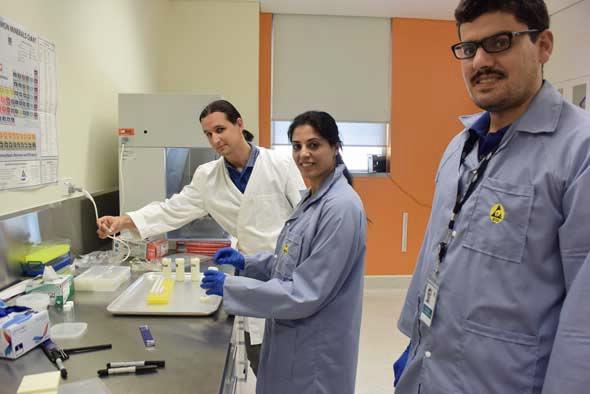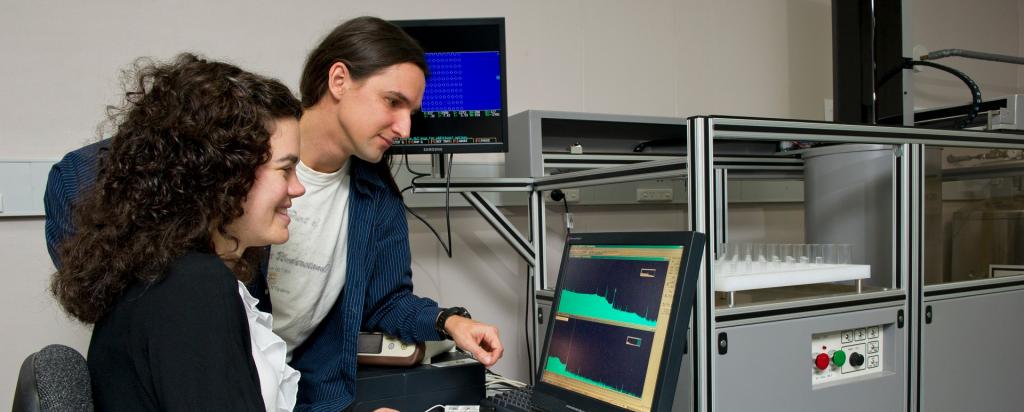

Published on the 7th December 2015 by ANSTO Staff
Jordan will soon commission its first research reactor, the Jordan Research and Training Reactor (JRTR), which is a pool-type multipurpose research reactor similar to ANSTO's OPAL reactor.

Yasser Al Sejlawi (pictured above right) and Kafa Al-Khasawneh (pictured above centre) are training on all aspects of setting up and running an Neutron Activation Analysis (NAA) laboratory. NAA is an analytical technique that measures the elements in samples using neutrons.
ANSTO completely renewed its NAA equipment when the OPAL reactor was commissioned. ANSTO staff have the expertise to advise the Jordanian Fellows on the equipment Jordan should acquire in order to use the latest form of NAA, the “k0 method of standardisation”. “It is more flexible and powerful than classic NAA but more difficult to establish,” said John Bennett, Head of the Centre for Nuclear Applications.
The training program includes learning the complex setup process for the k0 method (extensive detector and neutron spectrum calibrations), configuring various software packages, irradiation and measurement planning, interpreting gamma spectra and performing calculations, client interactions and quality assurance/control.
Al Sejlawi said, “The training in NAA is a well-structured and well organised program. We also have the opportunity to experience real issues in NAA that could be encountered in future and learn how to manage them.”
On their return to Jordan, when the JRTR reactor is commissioned, the strong knowledge base that Al Sejlawi and Al-Khasawneh have gained at ANSTO will allow them to safely and effectively carry out NAA in their own facility.
The Jordon Atomic Energy Commission becomes the newest member of the exclusive global NAA club. Al-Khasawneh said, “I am eager to employ what I have learned in our labs in Jordan next year. Training at ANSTO will accelerate the work we do there and improve the quality of the results. We are grateful to our ANSTO trainers, particularly Attila Stopic.”
The placements were awarded under the IAEA’s Technical Cooperation Program as part of a national project on Building Capacity for the Construction, Commissioning, Safety and Utilisation of the Jordan Research and Training Reactor (Phase II), and coordinated by ANSTO’s International Affairs.